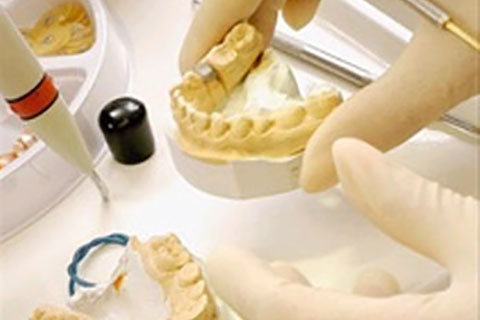-
Press Articles – Insurance – Published in Optician Magazine
22/08/2017Most if not all optometric practices insure their consulting room equipment, retail displays and stocks of frames on the widest basis possible. Directors are legally required to do so. Specifically, they are required to protect the assets of the business and this is normally achieved by transferring the risk of fire, theft and so on to an insurance company.
But how many insure the human assets of the practice, the people who make the business tick? How many have experienced or considered the impact if a practitioner has prolonged absence from work due to accident or sickness?
Statistics make uncomfortable reading: one in three people are off for six months at some point in their working lives and there are 32 million days lost through ill health each year – a figure which is still rising. Accident and sickness affects every occupation and those in high pressure/ stress environments are particularly at risk.
Bringing in a locum can cost £300 a day, which is a substantial additional cost for any practice.
Consider the loss of an optometrist for six months and how it will affect the practice. Colleagues may share the workload for a time, but sooner or later a locum will have to be engaged if the turnover of the practice is not to be drastically affected. The consulting room is the key to success. Surveys highlight that as much as 80 per cent of the practice’s income derives from the eye examination. Asset protection for the practice must focus on the eye test. A business can only be adequately insured if the equipment and the practitioner are covered. One without the other may mean significant loss of revenue to the practice or additional expenditure. Bringing in a locum can cost £300 a day, which is a substantial additional cost for any practice to carry.
Its effects are most severely felt in the smaller practices. The loss of one optometrist may affect the revenue stream in more than one outlet, whereas a single-optom practice would be unable to function without the services of a locum. Larger practices may have the resources to cover gaps, but for how long?
Given all these factors, we believe that the optometric profession should consider the protection of its human assets in the same way it insures its physical assets. This is prudent business practice and part of a director’s obligations.
Practices increasingly recognise the dependence of the business on the eye examination and seek to insure their key practitioners. Policies can be arranged in several ways. Consideration should be given as to who is the ultimate beneficiary of the plan – the practice or the practitioner?
This is an important question because of the different priorities of the two groups. A plan can be tailored to the needs of either and will benefit both. When written for the benefit of the practice it is the practice which receives the sum of money and has the discretion as to how to use it. The benefit when written for the individual is tax free.
Policies typically pays a weekly benefit for a period of 52 or 104 weeks following inability to work due to accident or illness. They pay after the expiry of a waiting period, for example four weeks. This can be varied, as can the benefit period to suit specific circumstances. After the waiting period is complete, benefit is payable for as long as the OO or DO is unable to work.
A doctor must certify that the practitioner is unable to carry out all or part of their activities and the policy will pay accordingly. As their recovery proceeds, work may be resumed on a part-time basis and benefits will continue to be paid on a proportionate basis.
Insurers limit the maximum weekly benefit, which can be selected. The formula varies from one insurer to another, but, typically, the weekly benefit should not exceed 50-60 per cent of gross earnings when arranged by the individual. When income tax and National Insurance are deducted, this equates approximately to net disposable income, placing the practitioner back in the same financial position. In addition to providing a weekly benefit, policies pay a lump sum in the event of death or upon permanent and total loss of use of hands, arms, feet and legs and the total and irrecoverable loss of sight in one or both eyes. Again, the level of benefit may be tailored to individual needs. Lump sum benefits are normally linked to a weekly benefit scale.
Like all policies of insurance, cover is subject to terms and conditions. Accidents due to hazardous pursuits may not be automatically covered, with the option to extend cover upon payment of an additional premium. These standard exclusions vary from insurer to insurer and may include contact sports such as football and rugby, skiing or riding, and so on. Look carefully to ensure you understand the basis of cover and it meets your needs.
Policies exclude the reoccurrence of pre-existing medical conditions. A typical exclusion might state ‘any medical or physical condition for which you have suffered or sought treatment or advice during the 24 months immediately prior to the date cover begins’. Cover may be available if additional information is supplied which may include a medical report being undertaken. Alternatively, the exclusion may be applied temporarily and be deleted after 12 or 24 months. Again the pre-existing condition will vary between insurers.
Ask for a copy of the policy wording or the terms and conditions. Take time to consider these carefully and ensure you supply all relevant information. Insurers rely upon the information supplied and the applicant has a legal duty to disclose all facts likely to influence the insurer’s opinion of the application. It is better to disclose too much information than too little. If you are unsure if an activity is hazardous, tell the insurers.
So what would a practitioner expect to pay? As an example, if a weekly benefit of £750 and lump sum of £75,000 was selected, the cost equates to approximately £7 a week. Given the potential loss to your business or earnings, personal accident and sickness should be viewed as an essential part of the overall insurance arrangements within the practice.
Specialist Insurance
-
Dental Laboratories
 Read More
Start quote now
Read More
Start quote now
-
Health Food Shops
 Read More
Start quote now
Read More
Start quote now
-
Garden Designers
 Read More
Start quote now
Read More
Start quote now






